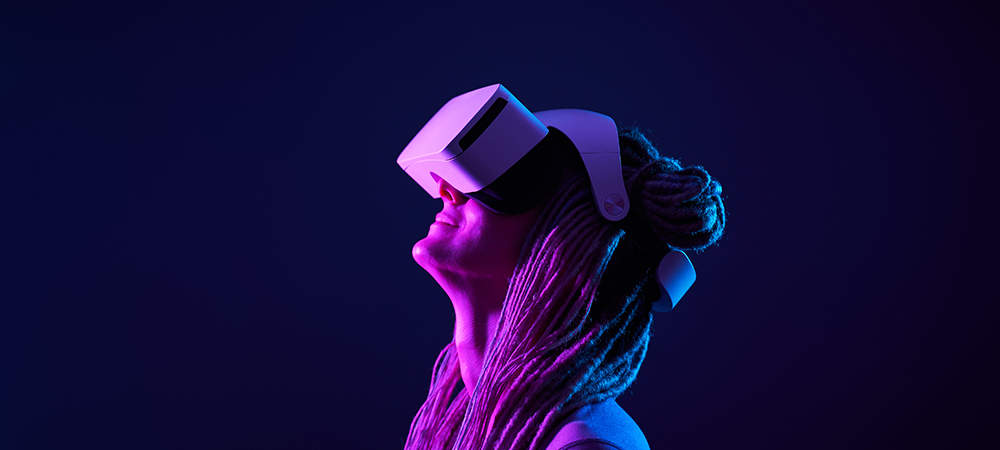In the digital world, experiences are everything. Soon, consumers could enjoy global experiences, interactions and social connections in a networked physical setting without leaving home, according to Ericsson’s Ten Hot Consumer Trends. The report reveals what else consumers could expect and experience by 2030.
A hybrid mix of connectivity-enabled technology, integrated into real physical environments to enhance shopping and buying experiences, is expected to be a common element of everyday life in 2030 by most current early adopters. The prediction is among the findings in the latest Ericsson Ten Hot Consumer Trends report.
The report marks the eleventh edition of the Ericsson ConsumerLab Ten Hot Consumer Trends report. In line with recent Ten Hot Consumer Trends reports, it targets early adopter consumers’ views on a 2030 timeline – this time covering hybrid shopping experiences in a fictional ‘Everyspace Plaza’ mall. Consumers were asked to evaluate 15 hybrid shopping mall facilities that extend the physical consumer experience using digital technology. Almost four-in-five respondents believe that all 15 tested concepts will be available in some form by 2030. Such ‘bricks-and-portal’ facilities will be enabled by technologies such as Virtual Reality (VR), Augmented Reality (AR) and programmable materials.
Magnus Frodigh, Head of Ericsson Research, said: “The semi-public nature of shopping malls means latency bounds could more easily be controlled and next-generation experiences could be delivered early on. XR devices could be provided on-site, making it possible to deploy private networks with custom applications also for consumers.”
Based on comprehensive research, the ConsumerLab Ten Hot Consumer Trends report represents the expectations and predictions of about 57 million early technology adopters globally.
The Ten Hot Consumer Trends 2030 – The Everyspace Plaza are:
The all-now arena
You could be both actor and spectator, but will the immersion experience give you a thrill or a fright? Nearly eight out of 10 consumers envisage event halls where telepresence technology allows artists to digitally perform as if they were there in person.
The immersive beauty salon
Skipping the knife and needle is an attractive beauty option for many. Beauty salons that use volumetric modelling technology to digitally enhance looks are expected in malls by seven out of 10 consumers.
The meta tailor
Fast fashion tailored just for you – and your avatar. More than seven out of 10 AR/VR users foresee a tailor in the mall using fabrics that can switch to become waterproof or provide ventilation when needed.
The anyverse pool
Many imagine the exploration of impossible worlds. Two-thirds of consumers believe there will be swimming pools where you can use an oxygenated VR headset to experience outer space in zero gravity.
The hybrid gym
For many, physical vigour and mental health are inextricably linked. Seven out of 10 consumers expect mental fitness centres that have multisensory, personality-tailored AR/VR scenery to help improve mental health.
The print-a-wish multifactory
On-demand repair and production are the future. Over half of consumers want to shop sustainably in a factory outlet that recycles their old products.
The restaurant at the node of the universe
Distraction-free, virtual company is preferable for many. Half of consumers want to visit restaurants to virtually eat with friends in other restaurants, anywhere in the world.
The neverending store
Try before you buy – virtually, at least. Three-quarters of consumers expect to be able to project their home inside the store when trying out new products.
The medical multiplex centre
We’re used to everything being instant. Why wait when it comes to health? Only 77% of consumers foresee in-mall medical centres with drop-in AI health scanning that gives near-instant health status updates.
The nature+ park
For those stuck in cities, nature may be what’s missing. Just 42% of consumers want to visit an in-mall park where they can feel closer to nature through digital and programmable materials that provide hybrid experiences.
The report insights are based on Ericsson ConsumerLab’s global research activities spanning more than a quarter of a century. It primarily draws on data from an online survey conducted between October, 2021, and November, 2021, of early adopters of AR, VR and digital assistants in 14 cities around the world.
Michael Björn, Head of Research Agenda, Ericsson Consumer and IndustryLab, said: “On the one hand, it may be difficult to imagine large numbers of consumers with expensive tech gear such as AR glasses, waterproof VR glasses, haptic body suits, tactile gloves and more at massive scale by 2030. Yet, on the other hand, if such equipment could be shared at lower cost it is possible that large numbers of consumers will have it to enhance everyday shopping mall experiences.
“In fact, 35% of surveyed consumers think shopping malls are more likely to feature next-generation technology than homes, compared to just 14% who disagree. Shopping malls have long been high-tech focal points, with many featuring cinemas, game arcades, concert halls, bowling alleys and more. They likely will continue to play that role. If anything, the future might be increasingly localised, with 32% of respondents agreeing that high-tech shopping malls will make moving to small towns and rural areas more feasible and attractive – and just 13% disagreeing with this.”
Click below to share this article

